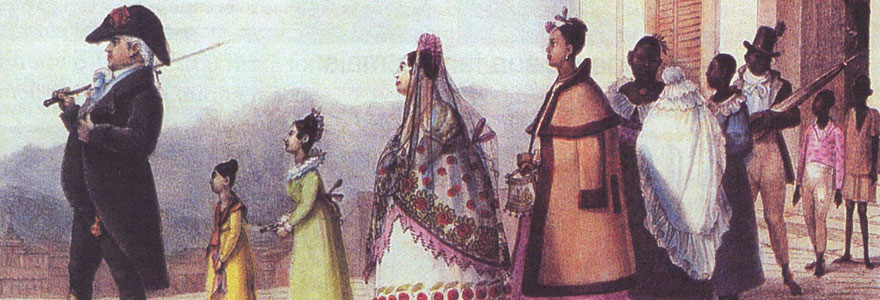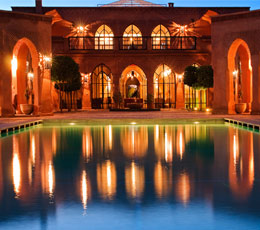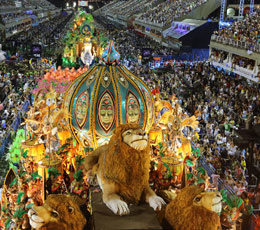An insight tour of 4 days with highlights
- Colonial seaport Paraty
- Dream beaches nearby
- Coffee plantations and colonial Fazendas
1st day
Early pick-up at your Hotel and drive in northerly direction along the shoreline of the Green Coast, to the colonial town of Paraty, an 18th century seaport that played an important role during that period when gold from the mines in Minas Gerais was shipped out from here to homeland Portugal, at that time an important colonial power that reigned Brazil during 4 centuries. The colonial gem is one of the most harmonic architectural ensembles in Brazil and has been named World Heritage by UNESCO. The about 4 hours scenic drive along the coast features great views on islands and little hidden beaches of overwhelming natural beauty. A charming Pousada, located in the historic center of the town, awaits you for check-in and a refreshing jump into the swimming pool. You are now to board our schooner for a boat ride between islands and beaches off Paraty. The boat will stop at one of the beautiful beaches where you may enjoy a swim in the crystal clear waters or stroll about the island and marvel of all the lush tropical vegetation around you. In the meantime a picnic is set up and you are invited to join in. Return to Paraty late afternoon. The evening starts with a walk through the narrow cobble stone alleys romantically lit by colonial candelabras. The boutiques display a wide array of beautiful handicraft and Brazilian styled leisure clothing. Dinner is at a seafood specialty restaurants owned by friends.
2nd day
After breakfast we will pay a visit to a nearby settlement of the guarani Indian tribe. Discussions with the Chief and members of the council normally proof very interesting and informative and will certainly contribute to enrich the Paraty experience. We recommend a contribution by purchasing their lovely handicraft made from natural fibers and wood. From here it will take a short drive through the Atlantic Coastal Mountains to get to the dream beach of Trindade. Sitting under a shadowy wild almond tree, right there at the beach and with a special batida poured by Carlos, right on your lips, you may wonder about all the hassle back home or elsewhere in the world. Heading back to Paraty in the afternoon not before paying a visit to one of the notorious sugar cane mills that produce fine cachaça, the Brazilian national drink! Our guide will take care however that the visit would not take too long, since a walk about the little town of Paraty is still on the list today. There you will marvel at colonial mansions and churches that date back to the early 18th century and at elaborated architectural style of that time, contrasting sharply with modern edifications, fortunately not dominating in Paraty.
3rd Day
Departure today is early, since we will drive up into the Coastal Mountains where we will visit more gems of the Brazilian colonial period. At Barra do Piraí we are greeted by Sr. João and his wife Ana, owners of Fazenda Taquara. The region of Paraíba valley had its prime time late in the 19th century when coffee was grown on the hills by efficiently using slave labor. After slavery was abolished in 1888, growing coffee on the rugged terrain was not longer possible, without employment of labor, which proofed now to be too expensive. The decay of the region began. Some of the luxury displayed by the Coffee Barons, as they were called in the old times, can still be seen at thebeautifully restored properties that we are about to visit. First Sr. João and Ana show us around on the 18th. Century property, most probably the only one that still produces (organic-) coffee. After visit the plantation we have lunch in the old cellar of the main house, which use to be the sleeping room of the slaves. Getting on soon we will arrive at the nearby Fazenda Ponte Alta, an outstanding colonial edification where the group will stay overnight in adequate surroundings. There will also be a dinner served by waiters and waitresses dressed in original clothing of the colonial period.
4th day After breakfast the group visits the slaves museum of the Fazenda, and gets to know the history of the property that dates back to the late 18th Century. We suggest now a walk on the large property that includes reminiscents of the Atlantic Coastal Rainforest that once covered 15% of the Brazilian territory, now reduced to a mere 1%. You may as well take a horse and have a ride or just enjoy the pool. After lunch however we will leave the past when we are heading for Rio de Janeiro. The tour ends either at your Hotel or at the Airport for departure to a new destinations or back home.



